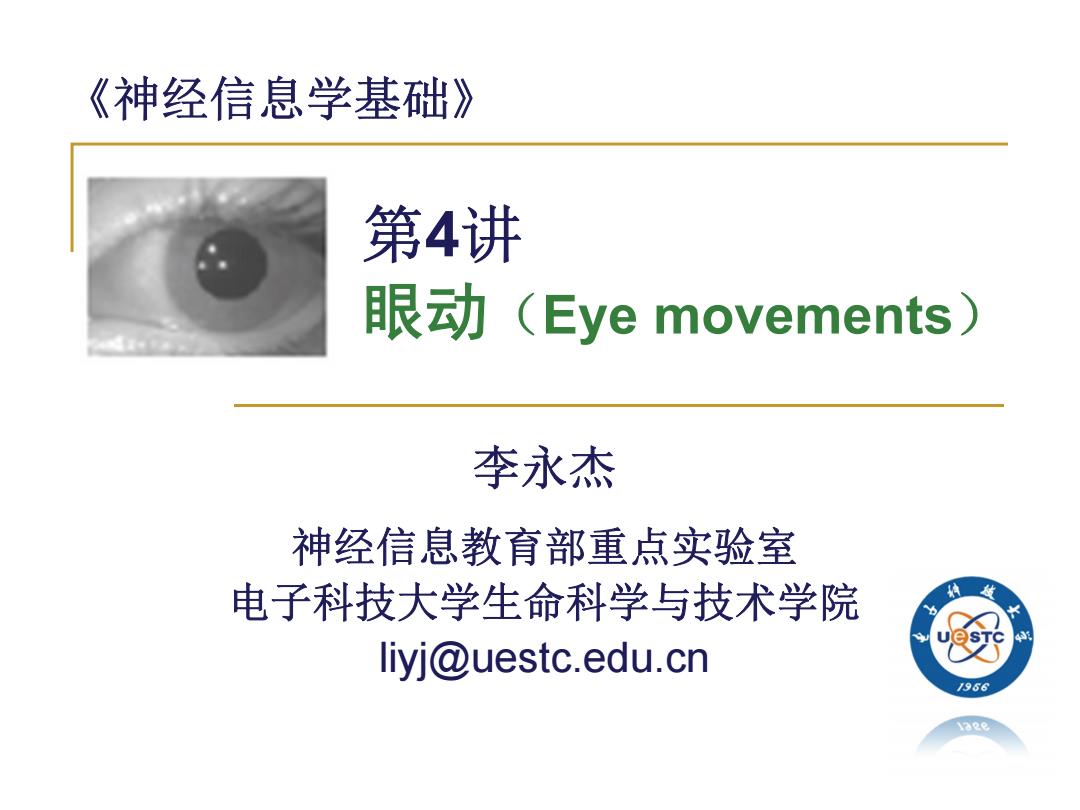
《神经信息学基础》 第4讲 眼动(Eye movements) 李永杰 神经信息教育部重点实验室 电子科技大学生命科学与技术学院 liyj@uestc.edu.cn 966 132e
第4讲 眼动(Eye movements) 李永杰 神经信息教育部重点实验室 电子科技大学生命科学与技术学院 liyj@uestc.edu.cn 《神经信息学基础》
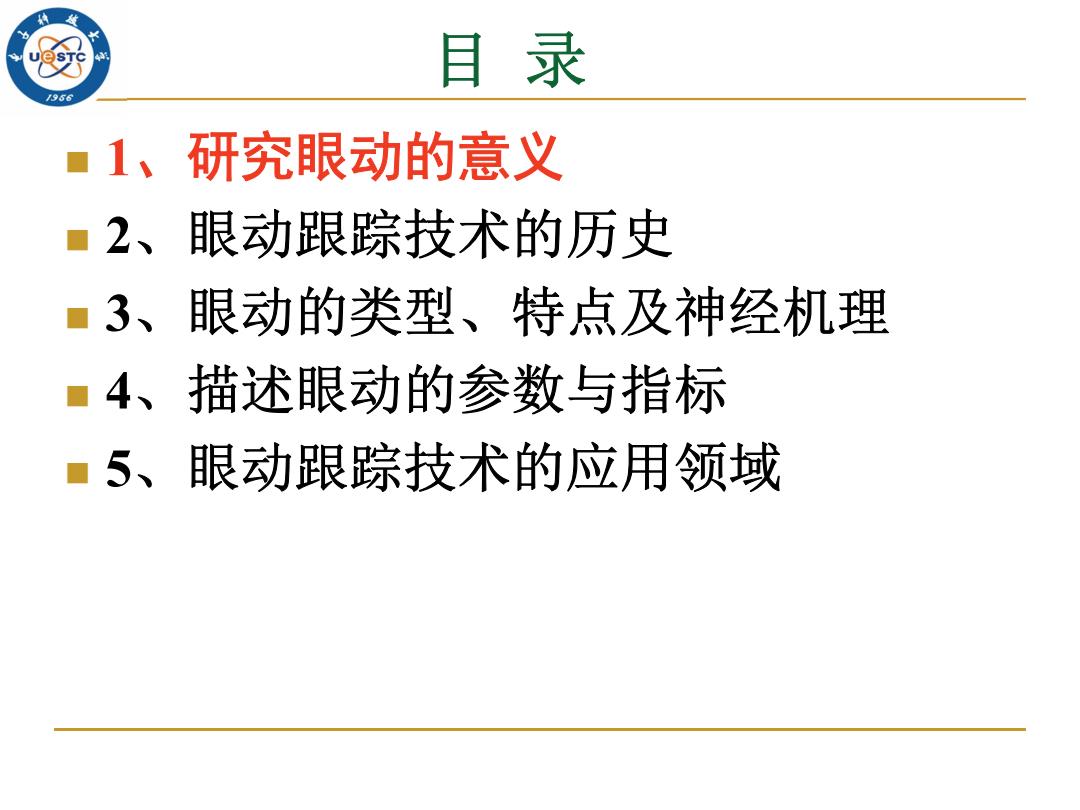
目录 /956 ■1、研究眼动的意义 ■2、眼动跟踪技术的历史 ■3、眼动的类型、特点及神经机理 ■4、描述眼动的参数与指标 ■5、眼动跟踪技术的应用领域
目 录 1、研究眼动的意义 2、眼动跟踪技术的历史 3、眼动的类型、特点及神经机理 4、描述眼动的参数与指标 5、眼动跟踪技术的应用领域
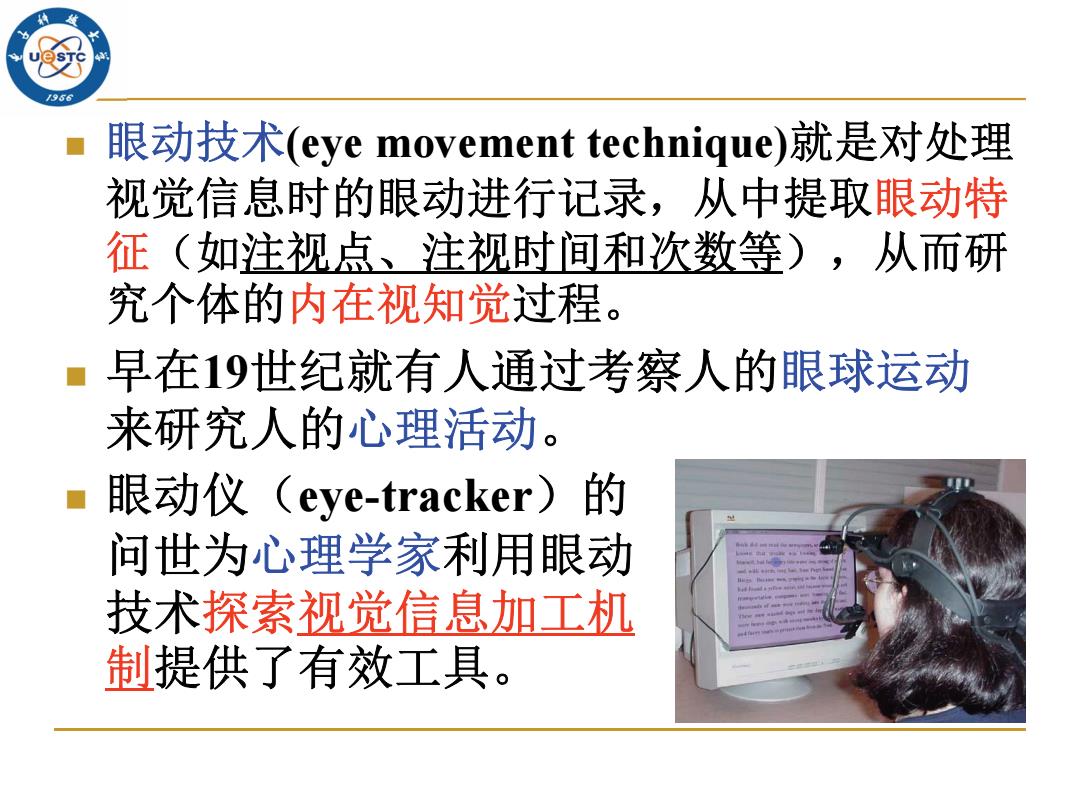
眼动技术(eye movement technique)就是对处理 视觉信息时的眼动进行记录,从中提取眼动特 征(如注视点、注视时间和次数等),从而研 究个体的内在视知觉过程。 早在19世纪就有人通过考察人的眼球运动 来研究人的心理活动。 眼动仪(eye-tracker)的 问世为心理学家利用眼动 技术探索视觉信息加工机 制提供了有效工具
眼动技术(eye movement technique)就是对处理 视觉信息时的眼动进行记录,从中提取眼动特 征(如注视点、注视时间和次数等),从而研 究个体的内在视知觉过程。 早在19世纪就有人通过考察人的眼球运动 来研究人的心理活动。 眼动仪(eye-tracker)的 问世为心理学家利用眼动 技术探索视觉信息加工机 制提供了有效工具
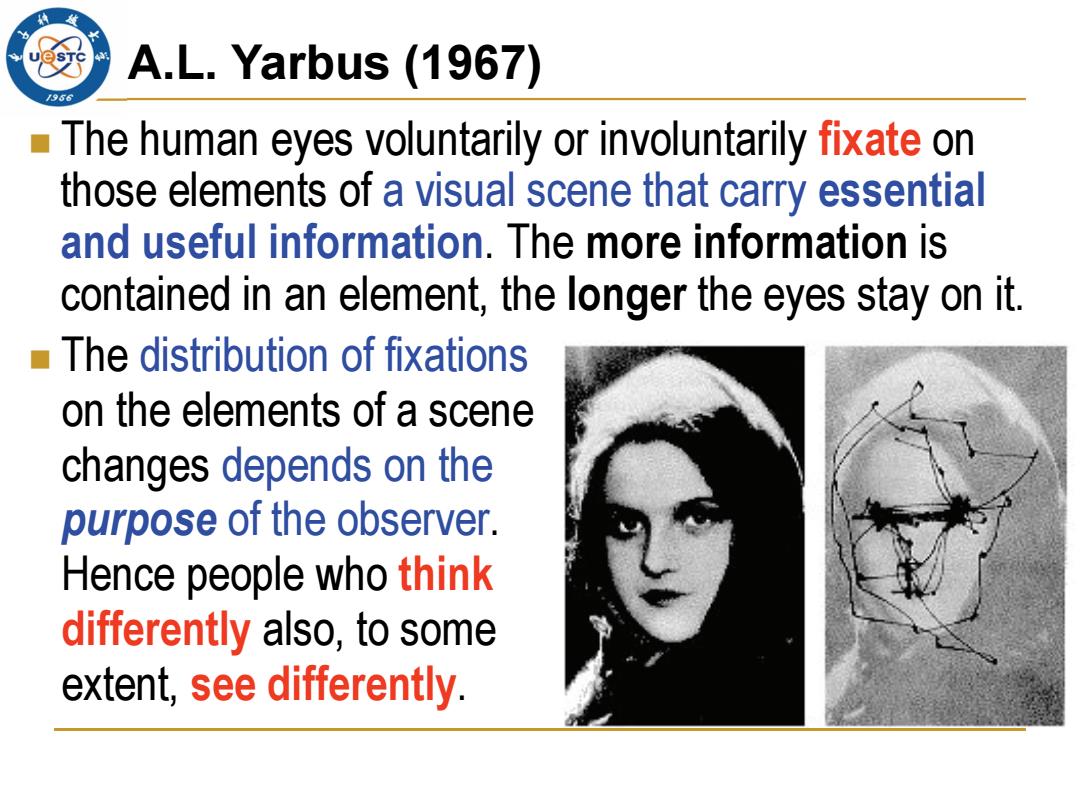
A.L.Yarbus (1967) /956 The human eyes voluntarily or involuntarily fixate on those elements of a visual scene that carry essential and useful information.The more information is contained in an element,the longer the eyes stay on it. -The distribution of fixations on the elements of a scene changes depends on the purpose of the observer. Hence people who think differently also,to some extent,see differently
The human eyes voluntarily or involuntarily fixate on those elements of a visual scene that carry essential and useful information. The more information is contained in an element, the longer the eyes stay on it. The distribution of fixations on the elements of a scene changes depends on the purpose of the observer. Hence people who think differently also, to some extent, see differently. A.L. Yarbus (1967)
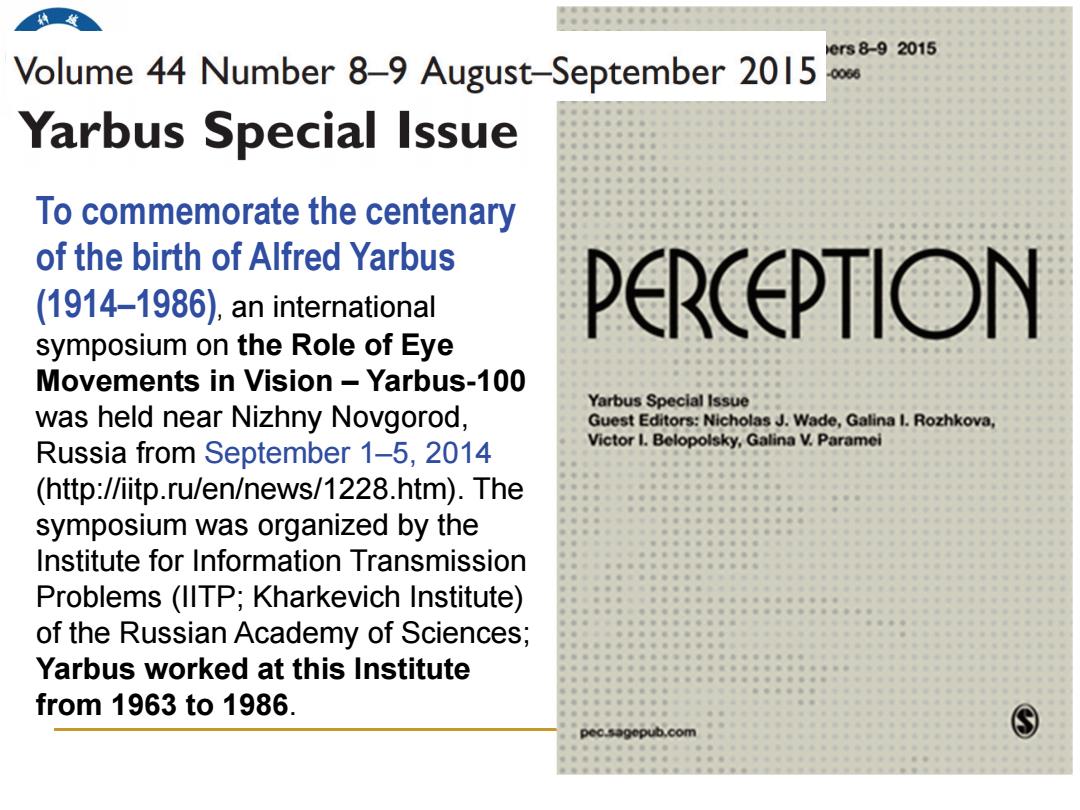
ers8-92015 Volume 44 Number 8-9 August-September 2015 -0066 Yarbus Special Issue To commemorate the centenary of the birth of Alfred Yarbus (1914-1986),an international PR(∈PTION symposium on the Role of Eye Movements in Vision-Yarbus-100 Yarbus Special Issue was held near Nizhny Novgorod, Guest Editors:Nicholas J.Wade,Galina I.Rozhkova, Russia from September 1-5,2014 Victor I.Belopolsky,Galina V.Paramei (http://iitp.ru/en/news/1228.htm).The symposium was organized by the Institute for Information Transmission Problems(IITP;Kharkevich Institute) of the Russian Academy of Sciences; Yarbus worked at this Institute from1963to1986. pec.sagepub.com
To commemorate the centenary of the birth of Alfred Yarbus (1914–1986), an international symposium on the Role of Eye Movements in Vision – Yarbus-100 was held near Nizhny Novgorod, Russia from September 1–5, 2014 (http://iitp.ru/en/news/1228.htm). The symposium was organized by the Institute for Information Transmission Problems (IITP; Kharkevich Institute) of the Russian Academy of Sciences; Yarbus worked at this Institute from 1963 to 1986